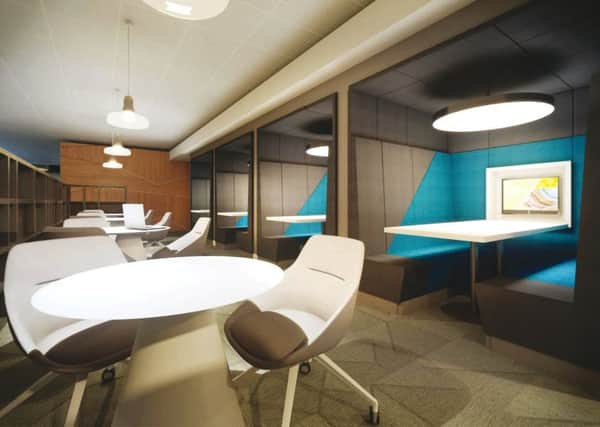Commercial property: Take an open-minded view of office interiors


We are beginning to champion open, flexible working environments, and spaces that blur the boundaries between work and life, which makes sense as we spend a huge proportion of our time working, and not just between nine and five.
More of us are making use of flexible working – not just in hours but locations too.
Advertisement
Hide AdAdvertisement
Hide AdToday, work has shifted from a place to a space, and so offices don’t need to fit traditional moulds anymore.
As our working lives evolve, there is a demand for multi-purpose office units, which can facilitate a whole range of activities and accommodate everything from barista cafés to lunchtime yoga.
We are also seeing more multi-use buildings, with offices, apartments, gyms and other facilities sharing the same space.
Millennials and Gen Zers crave social spaces, because while they’re constantly connected to the world virtually, they are more likely to feel lonely than any other age group.
This, coupled with reports that one-fifth of millennials have turned down a job thanks to poor office design, should be a wake up call for employers.
Office environments have a real impact on staff health and wellbeing, and employers should be taking a holistic approach to design, ensuring that spaces are inclusive, flexible, and improve employees’ relationships with their jobs. In this way, the workplace is an important tool in the war to attract talent.
Take open workspaces, for example. When the trend for open-plan offices first began, little thought was given to the implications for noise levels.
Yes, open spaces benefit collaboration, but can also hinder concentration and in some cases increase stress.
Advertisement
Hide AdAdvertisement
Hide AdIn fact, a study by analysts Oxford Economics found the ability to focus on work without interruption is a top concern for workers across all generations.
A glance across the average open-plan office will reveal people wearing headphones in an attempt to concentrate, a behaviour that negates what that workplace design was meant to achieve.
A number of offices now champion the “third space” whereby small nooks and crannies are used by employees to get away from their desks and excess noise.
Everyone works differently, and having a choice of work settings will help boost productivity and, as a result, job satisfaction.
Of course, staff need down time too. Apparently, some 75 per cent of UK adults have felt overwhelmed or unable to cope at work, which has resulted in calls for workplace stress to be regulated as a safety hazard.
Employees cannot sustain high levels of productivity at all times, and this is leading to a trend for designated recharge areas where workers can unwind.
Ultimately, the ideal office layout comes down to choice and flexibility, with employees able to choose how they work, just as they choose when they work.
Employers should embrace flexible working – including hours and spaces – to cater to the varying needs of staff.
To some, this may seem a big ask, but to ignore these factors is a sure fire way of losing talented people.
Lisa Gribben is partner at Knight Frank in Glasgow